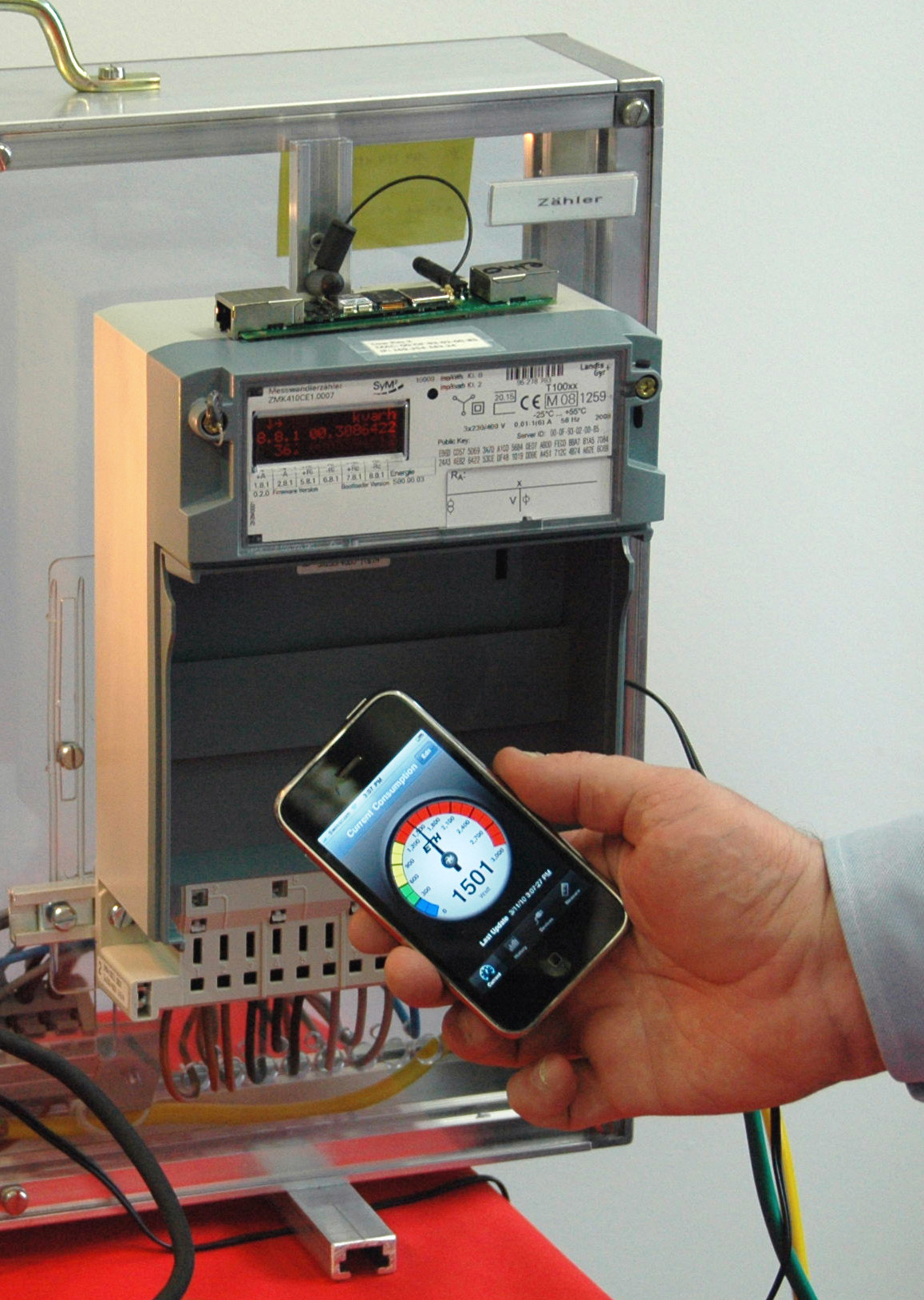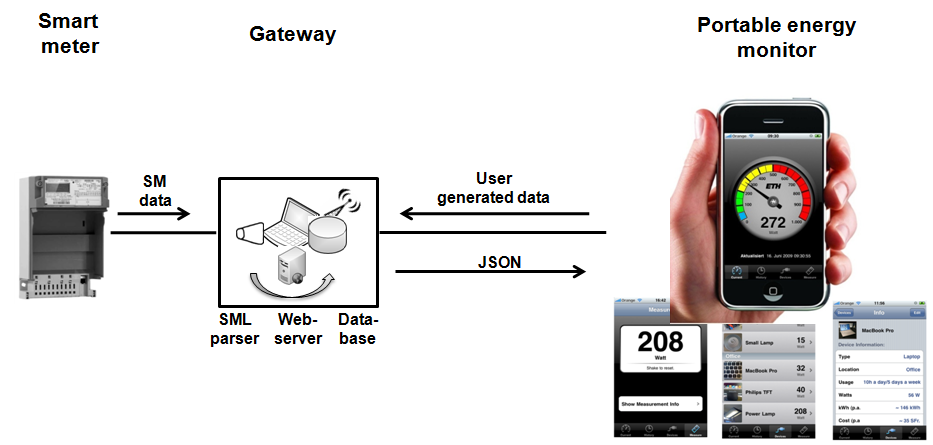|
eMeter - Providing handy energy consumption feedbackA Research Demo of the Distributed Systems Group
One of the major causes for the abusive residential energy consumption is that most people have very little visibility into their own energy usage. In order to identify the biggest energy guzzlers of the household and to adapt the behavior in way that conserves energy, both an apportion of the electricity consumption as well as timely and frequent feedback is essential. A monthly feedback provided through the energy bill is not sufficient. Existing off-the-shelf products, such as LCD panels or intelligent power outlets that depict the energy consumption in near real time seem more promising. However, many users do not take advantage of such existing solutions mainly for two reasons. First, the products require a complex installation, and second they do not allow for instantaneous feedback on the consumption of an individual appliance. 
New metering technology allows for fine grained real-time measurement of the entire consumption of the household. Therefore, we extended the capabilities of a smart electricity meter and developed a mobile phone interface that enables users to monitor, control, and interactively measure the consumption of their appliances. Together with a portable user interface on a mobile phone, our developed system enables users to track both the overall and the historical consumption of the household. Moreover, through a simple measurement functionality, the system furhter allows users to investigate the consumption of single devices. Thus, users can identify the biggest energy guzzlers at home and change their behavior in a way that decreases their energy consumption. This project is conducted within the Bits to Energy Lab and aims at the following three main aspects. First, we investigate and evaluate what functionality and visualization users understand and prefer on such a mobile UI. Second, we investigate how such a solution performs in terms of energy savings in comparison to other feedback solutions available today and what is necessary to motivate users to use such an application frequently over an extended period of time. And third, we explore the potential of pattern recognition algorithms applied to the measured load curve to automatically recognize devices and thus provide a more specific feedback and guidance in terms of possible energy saving measures. This demo was created in September 2009. See also the following related items:
|
|
|
